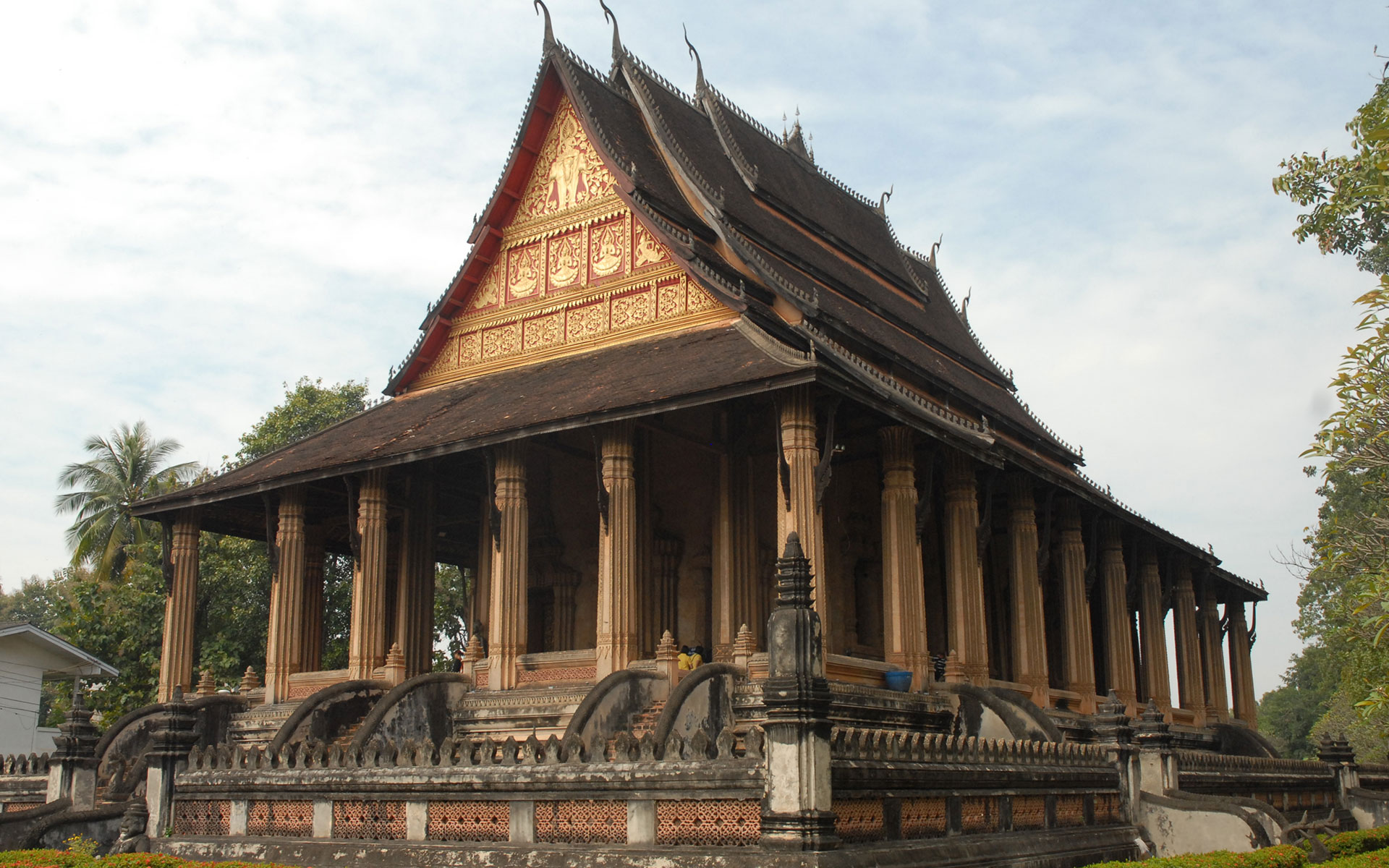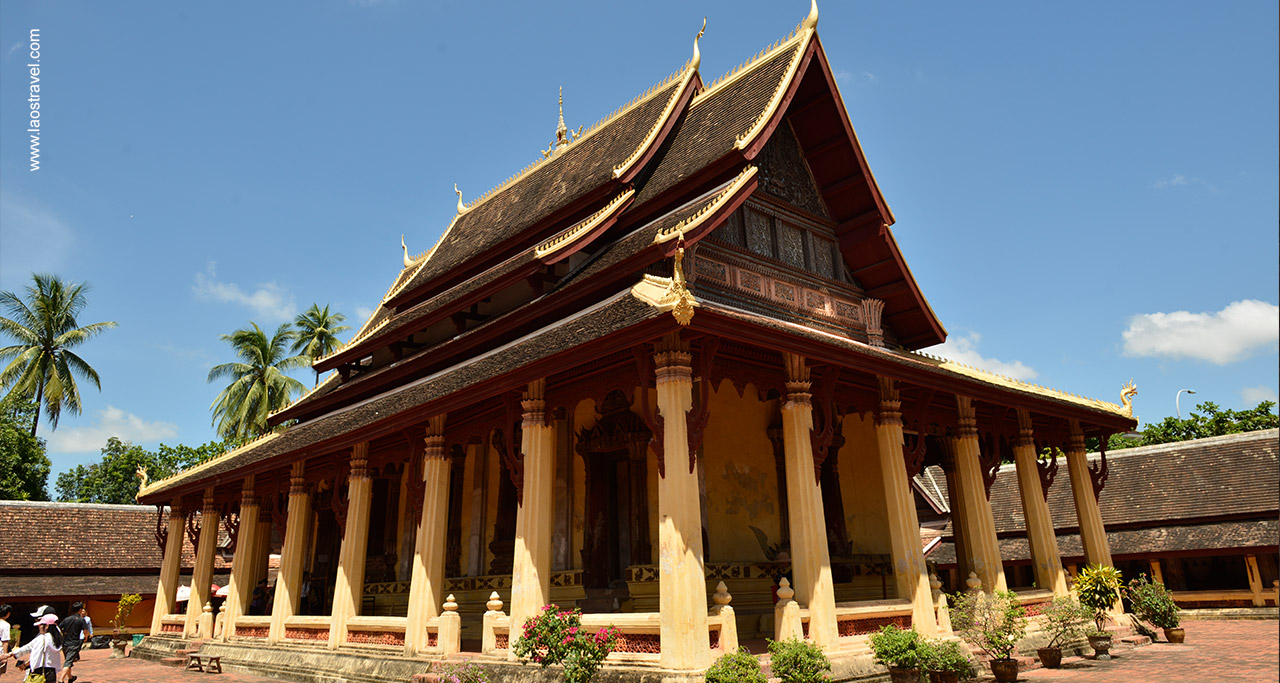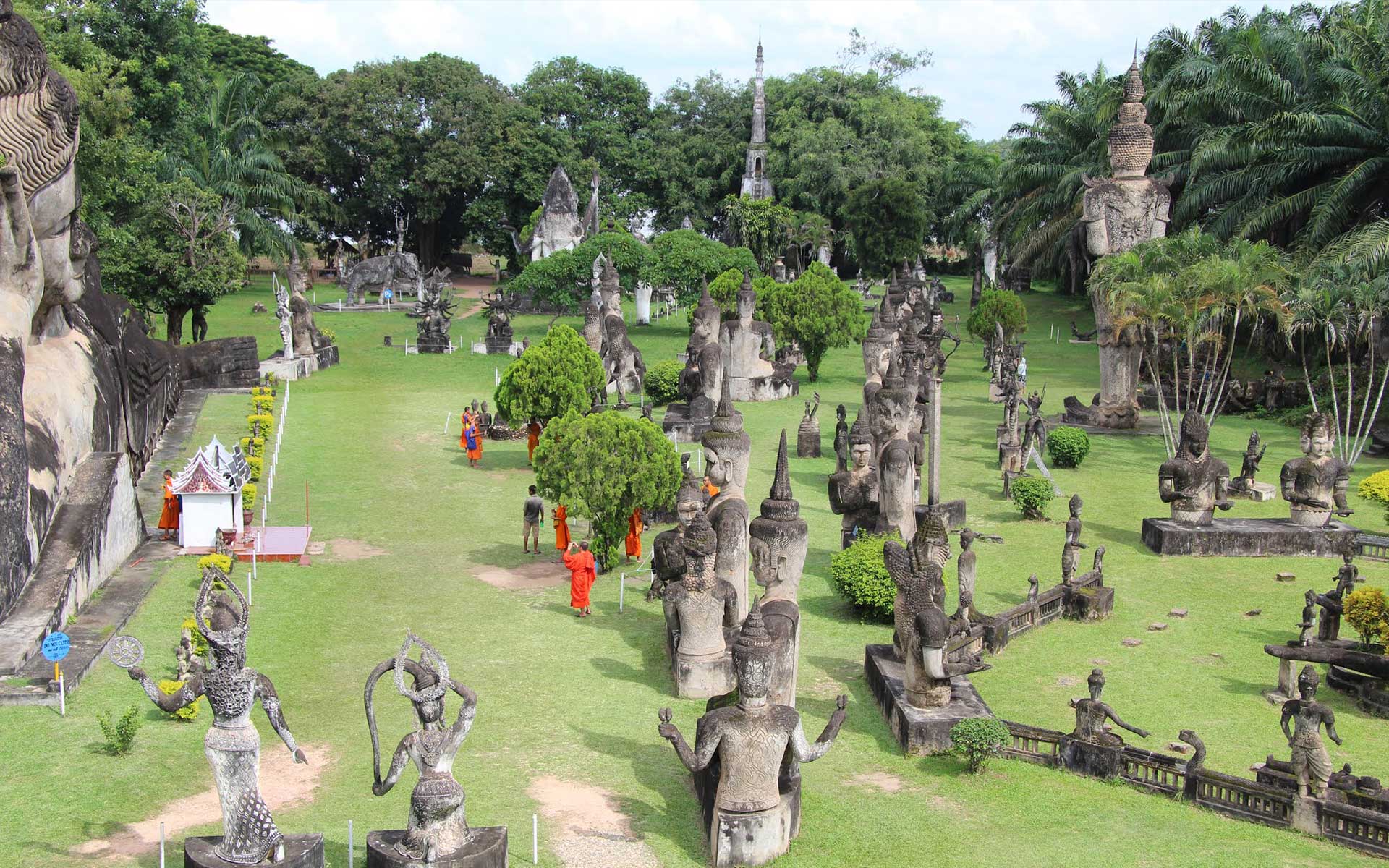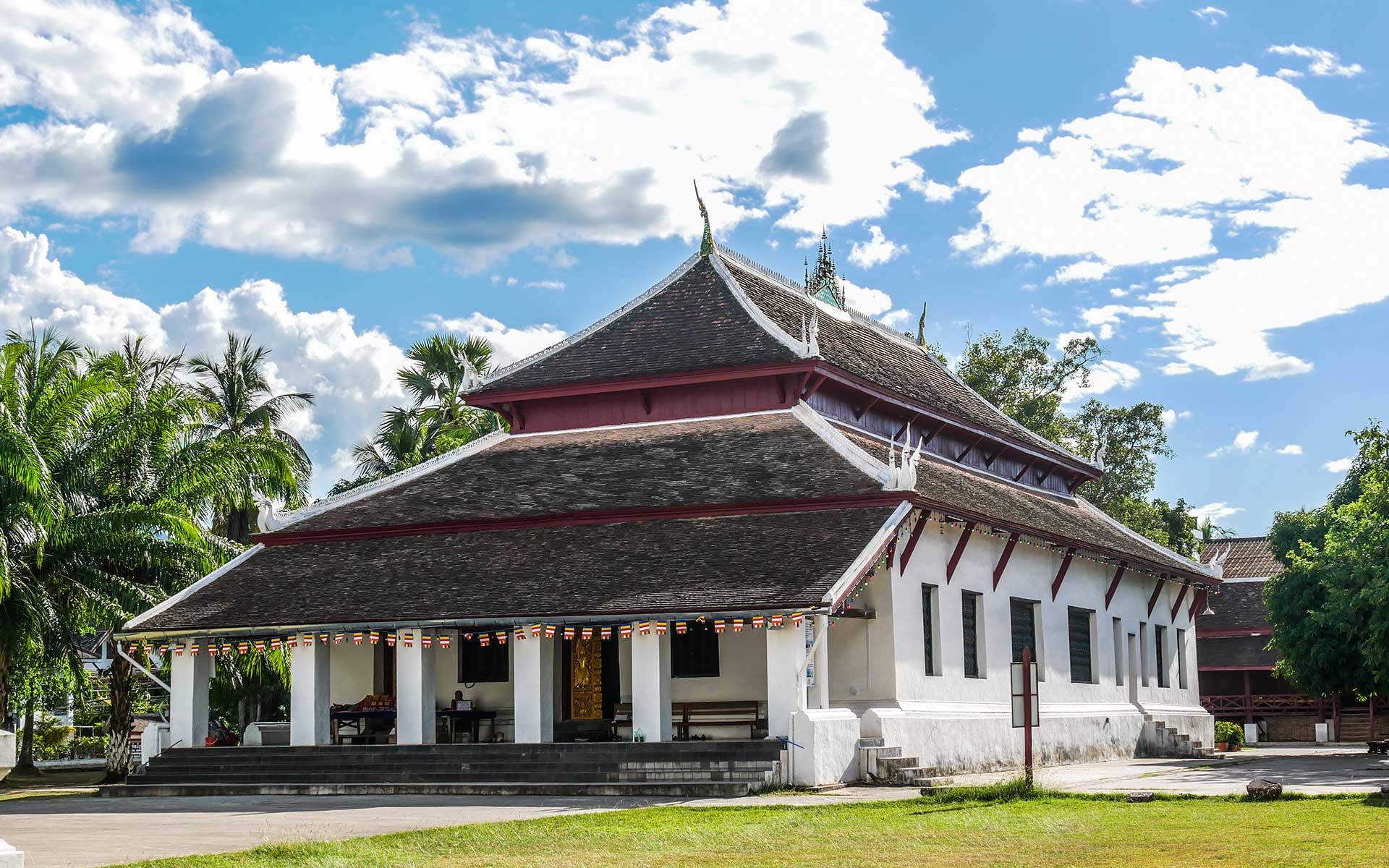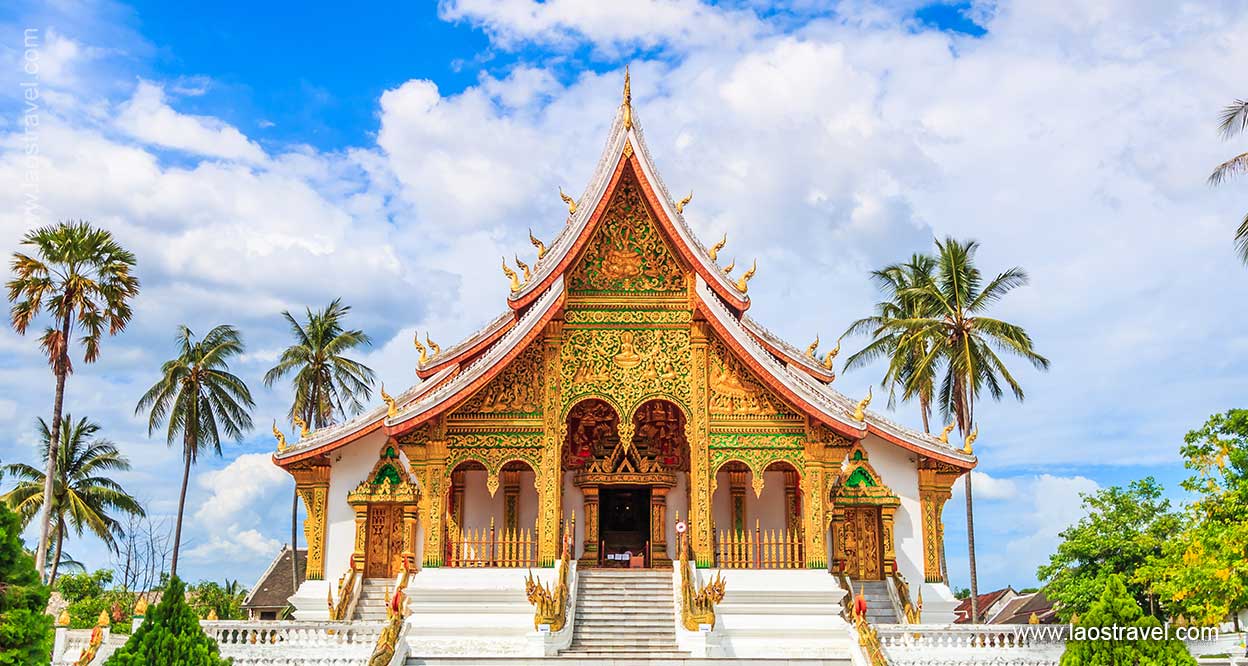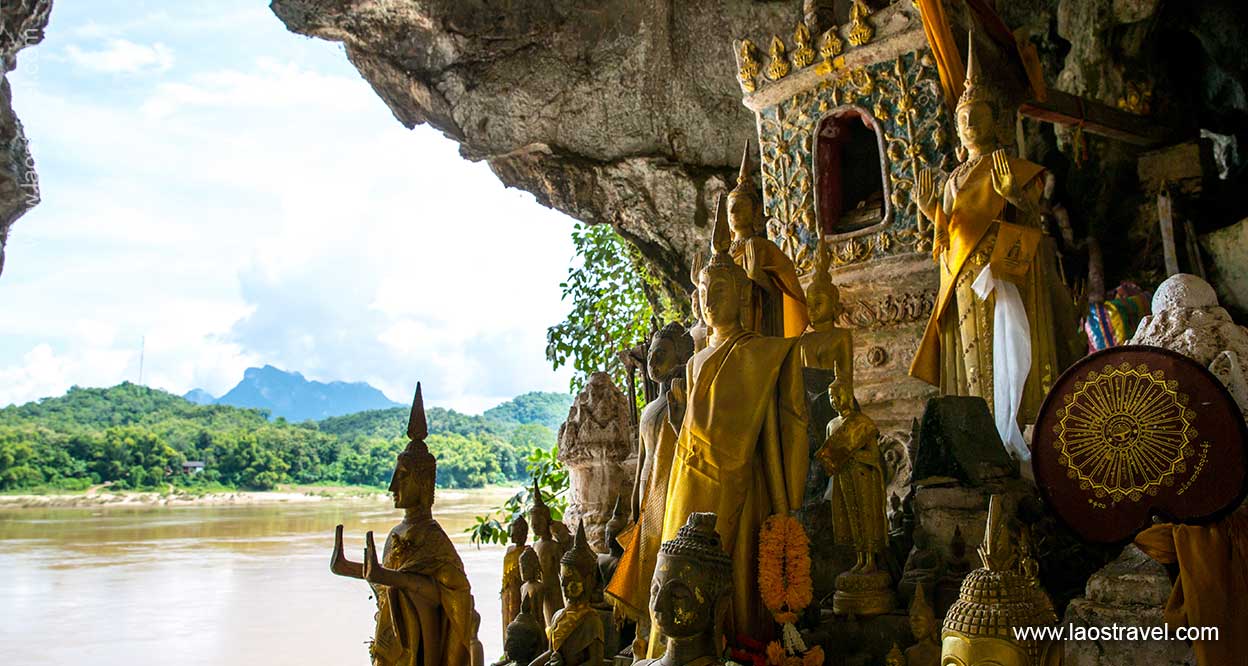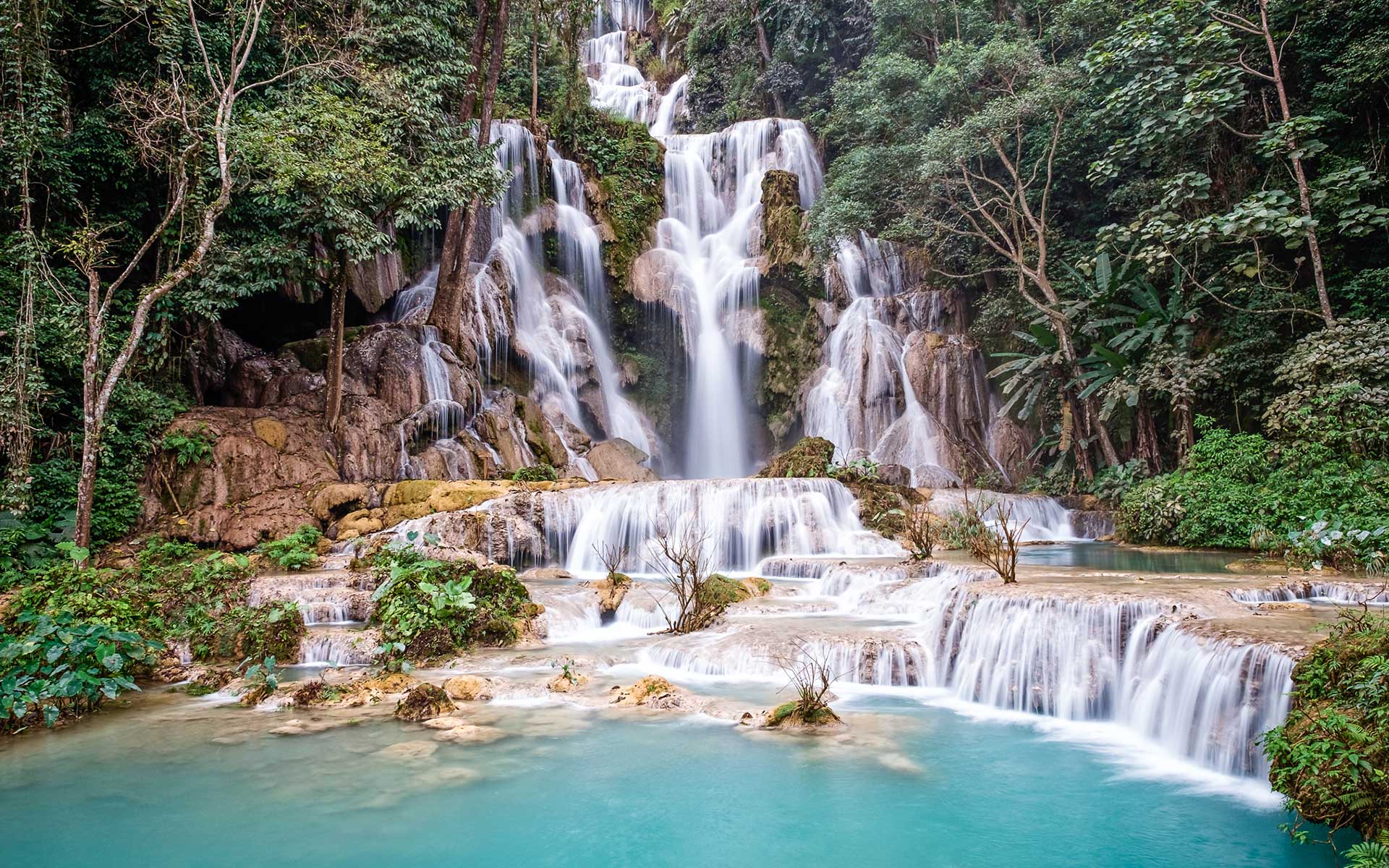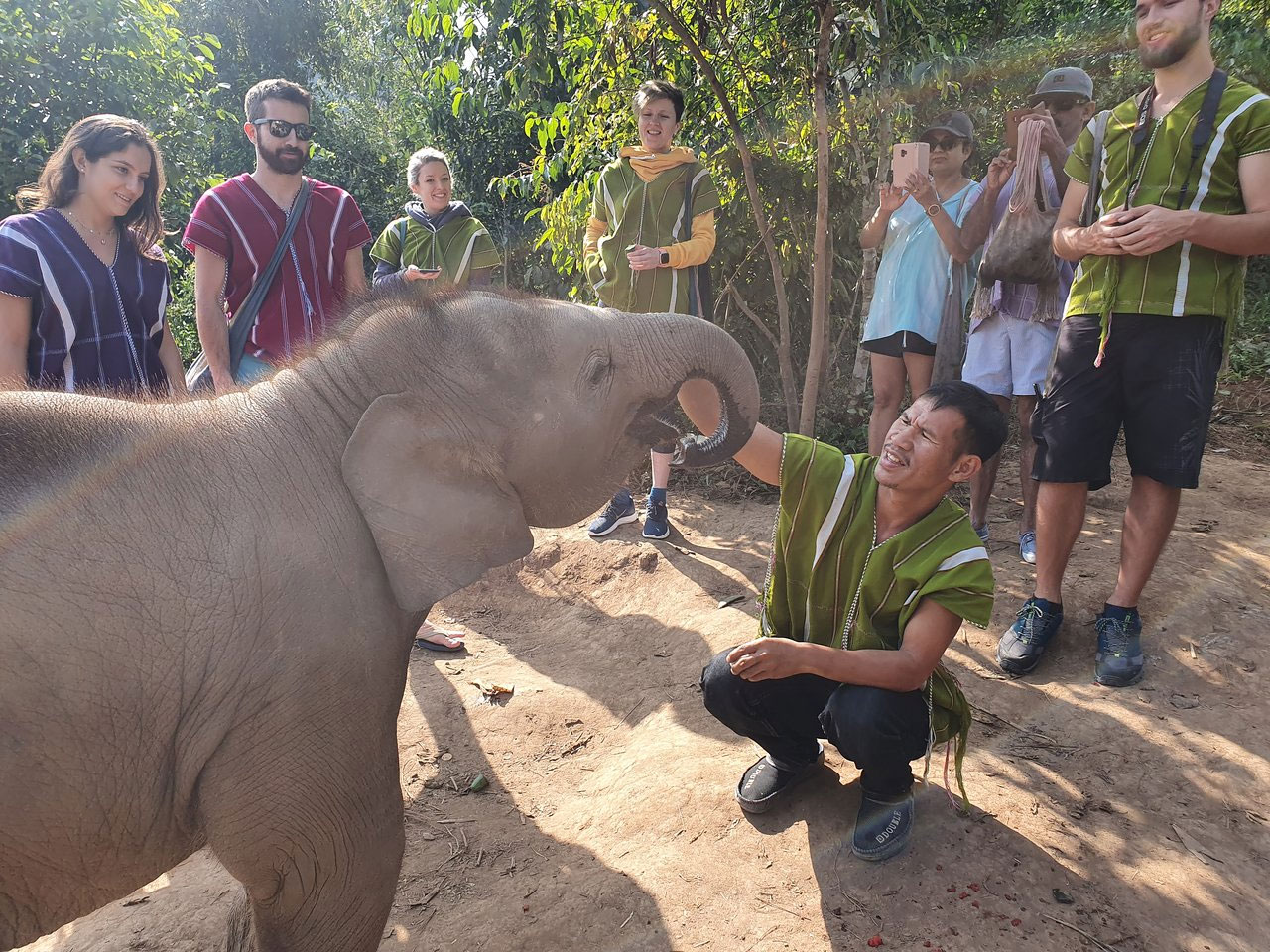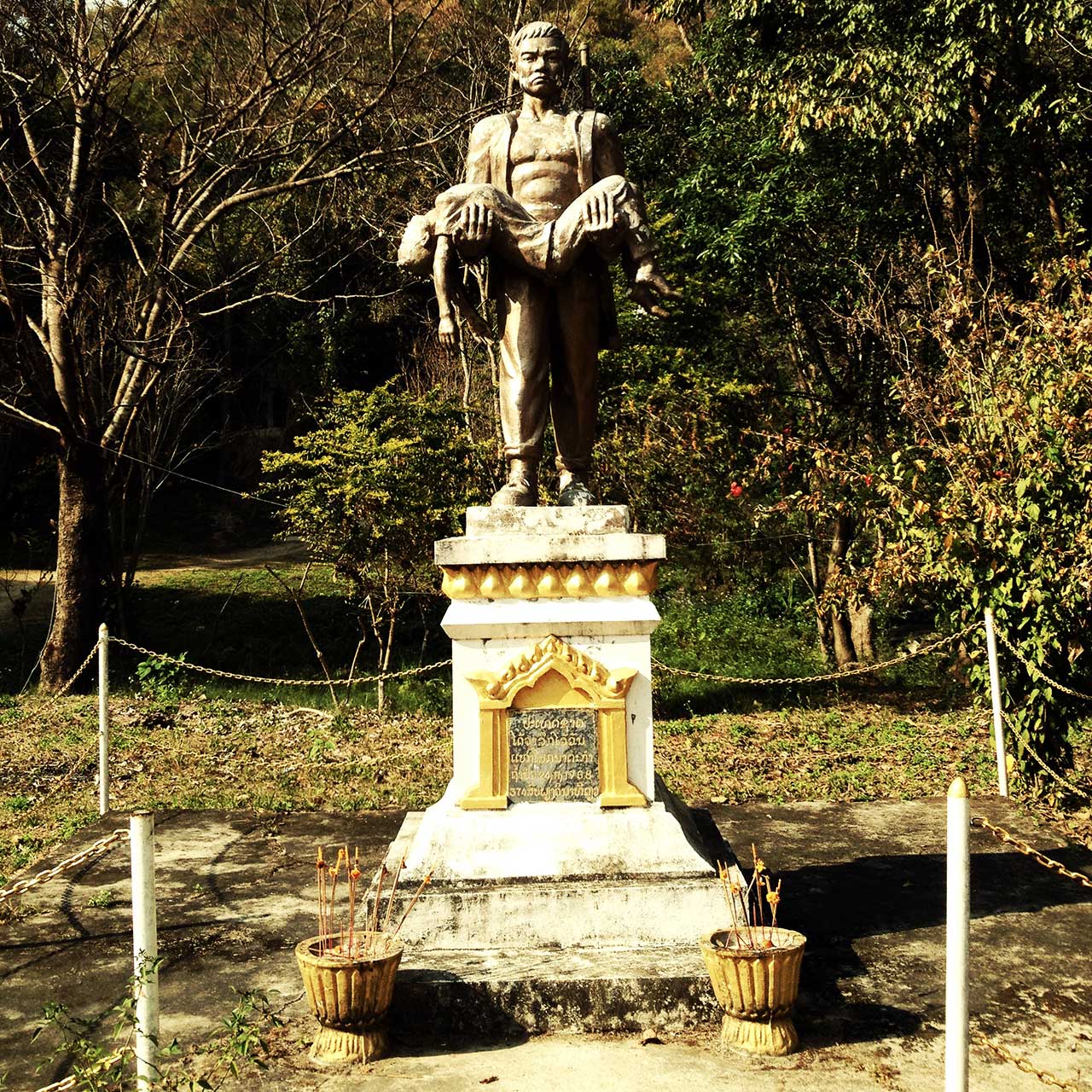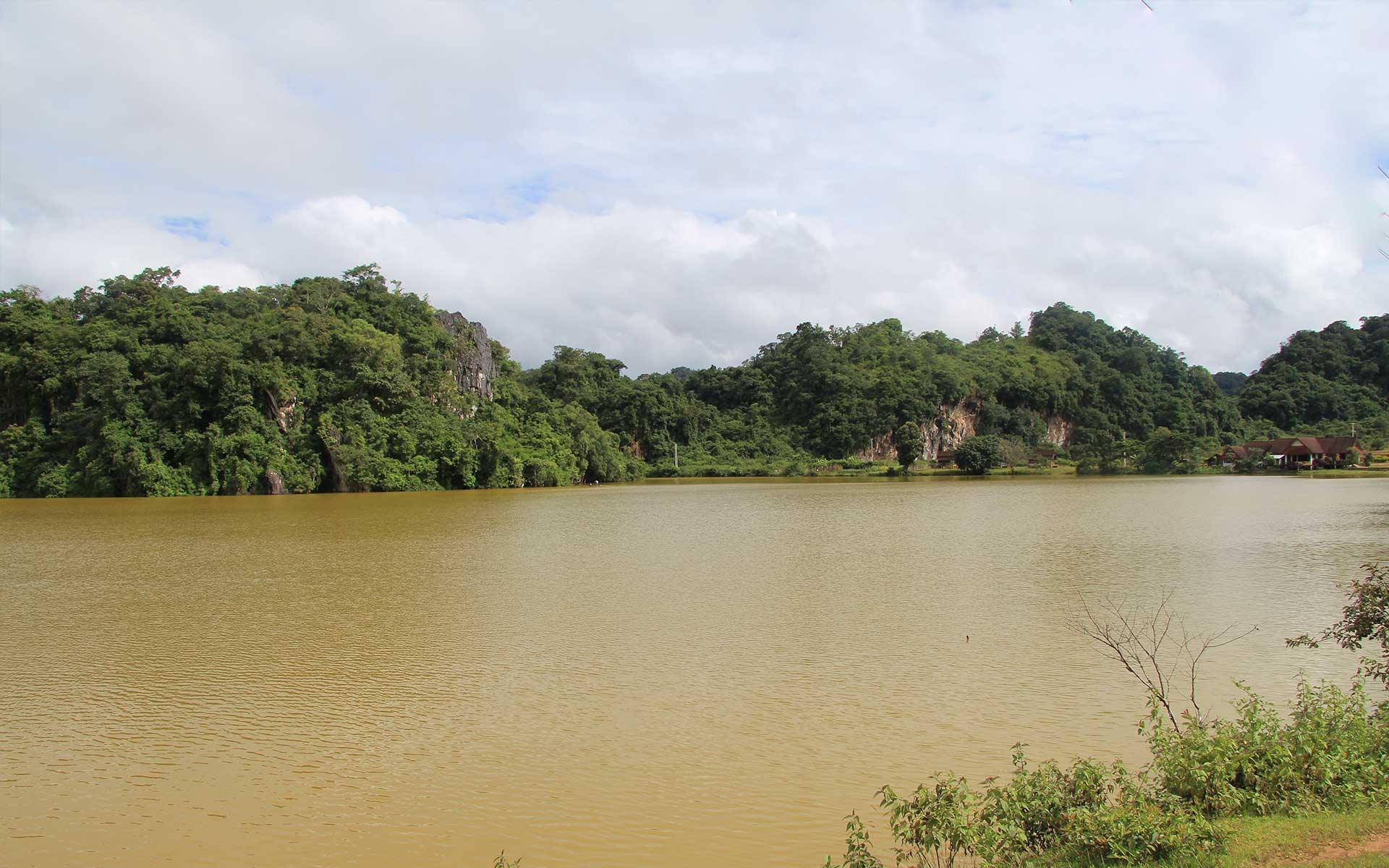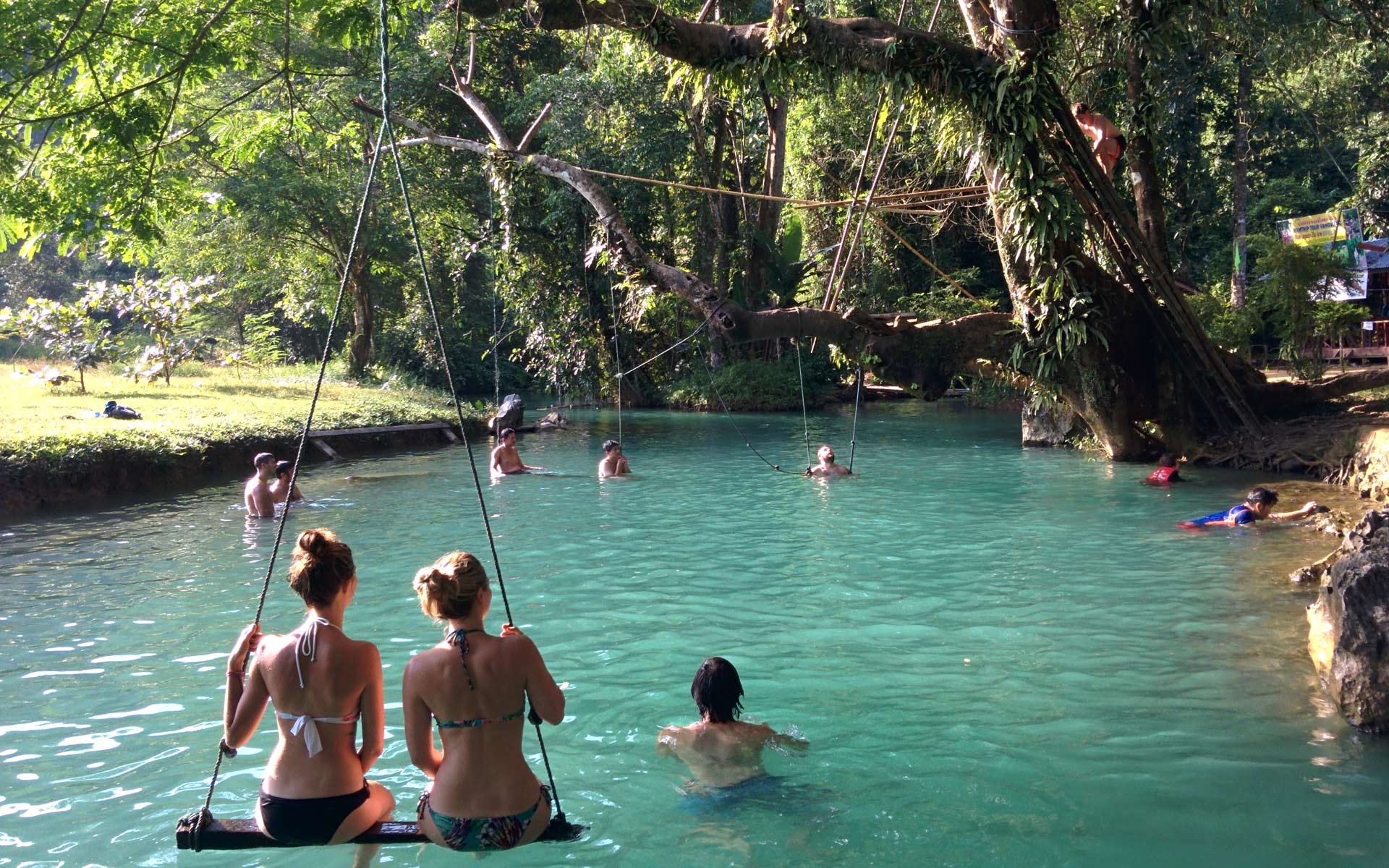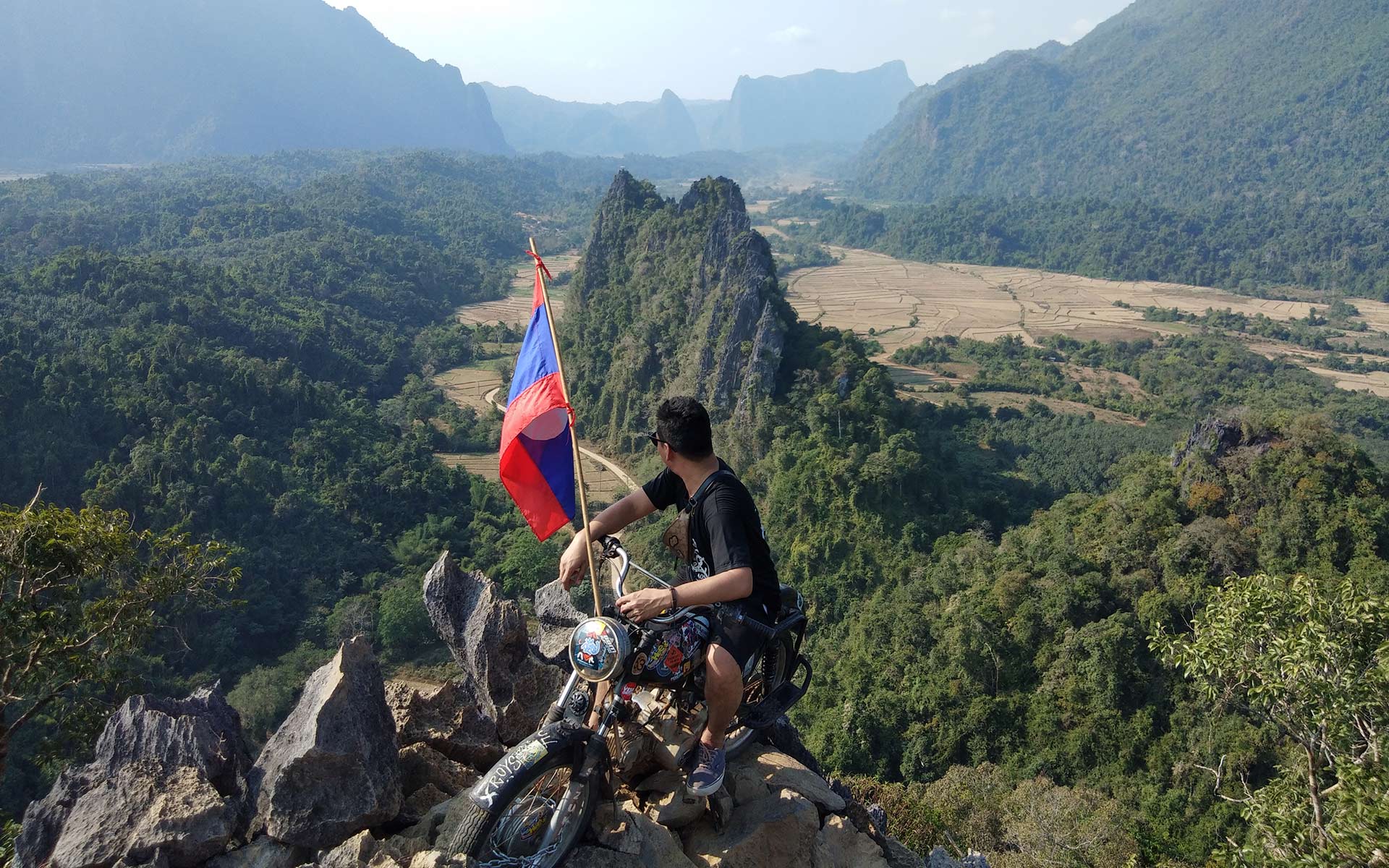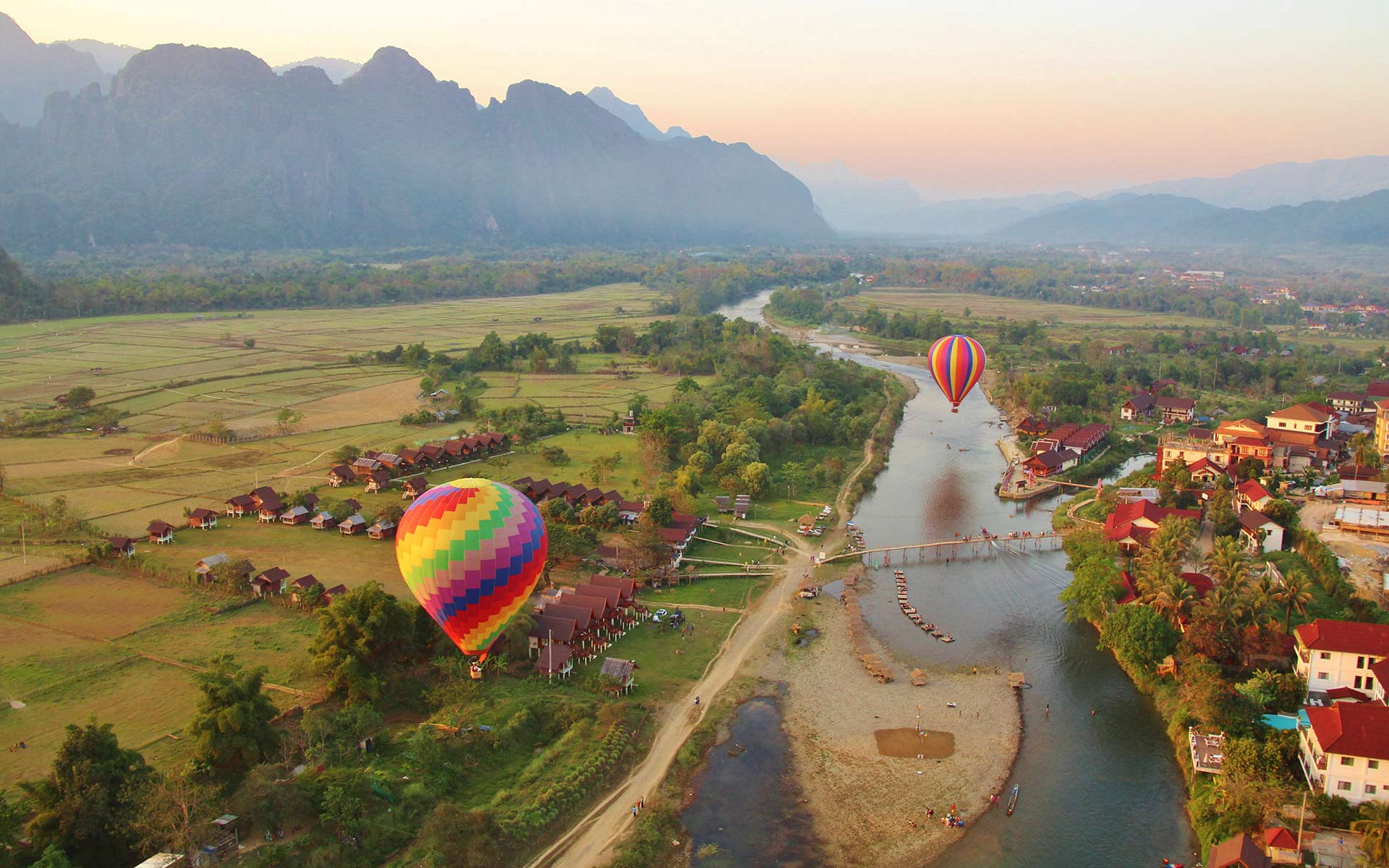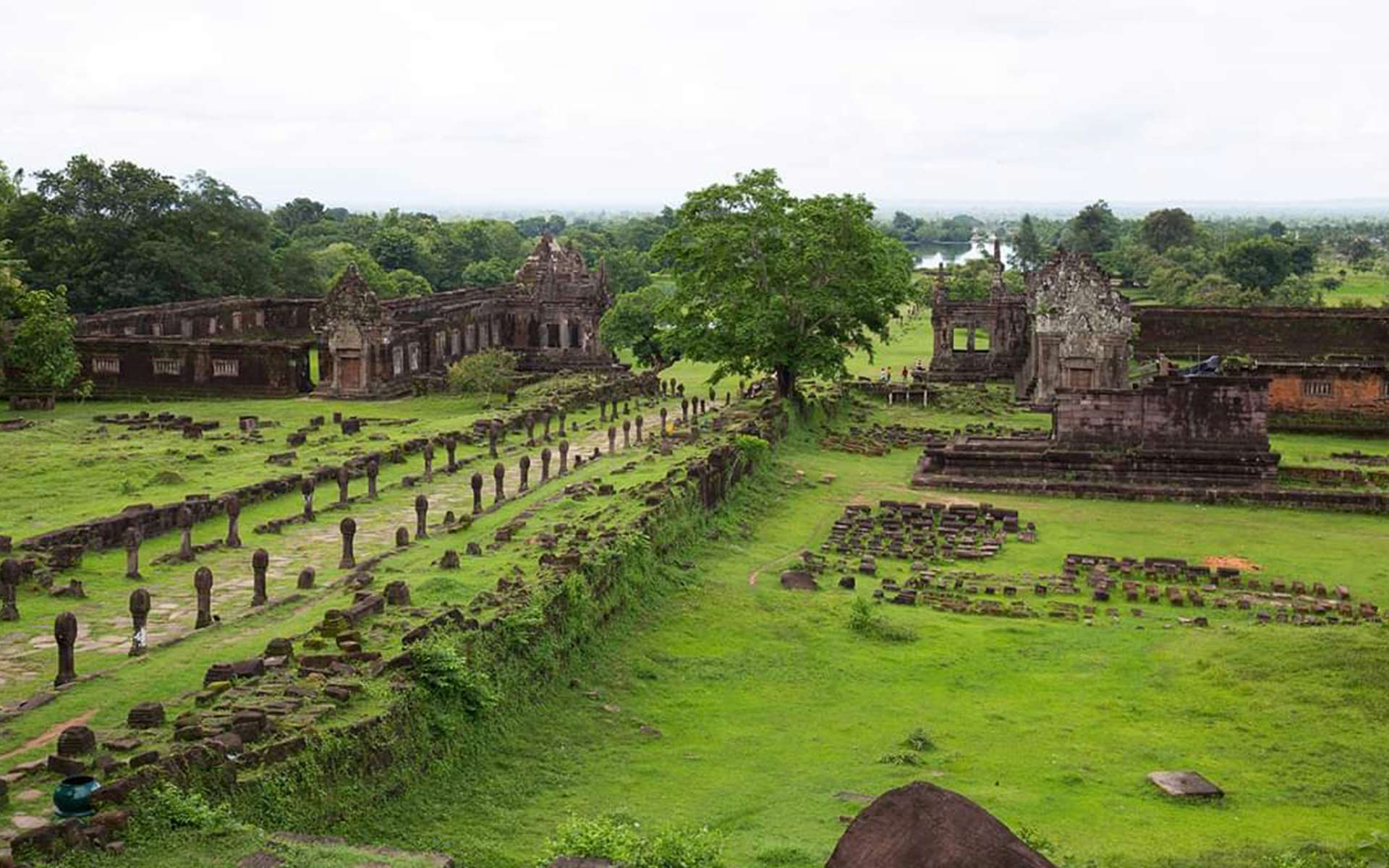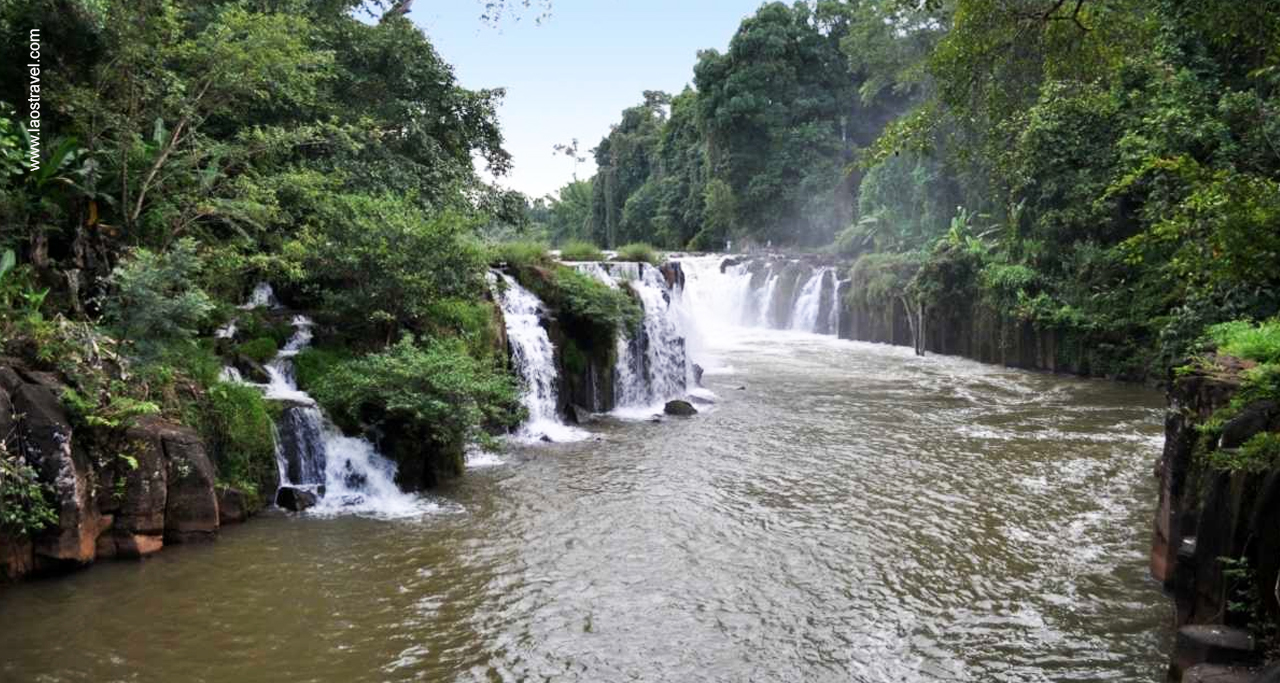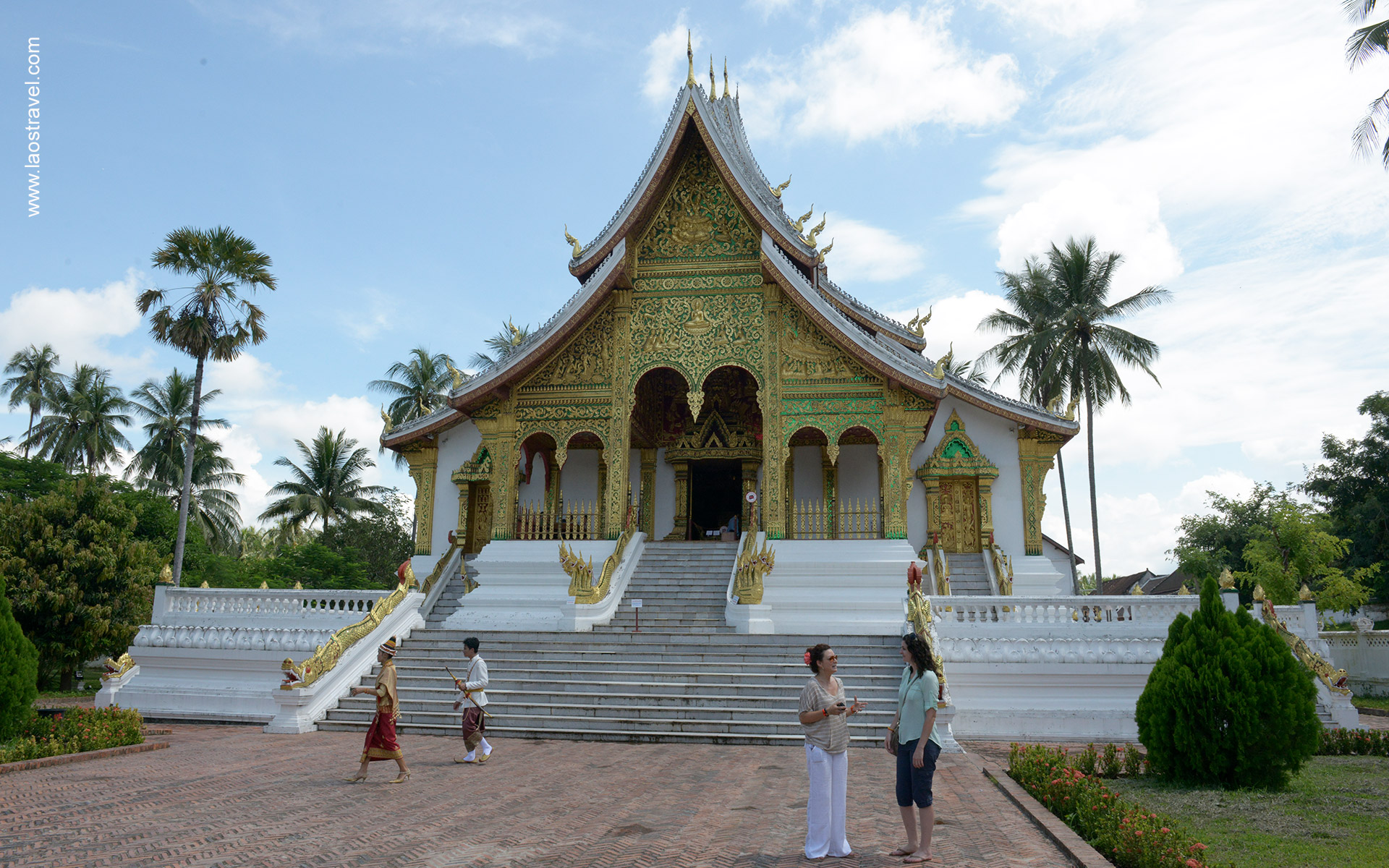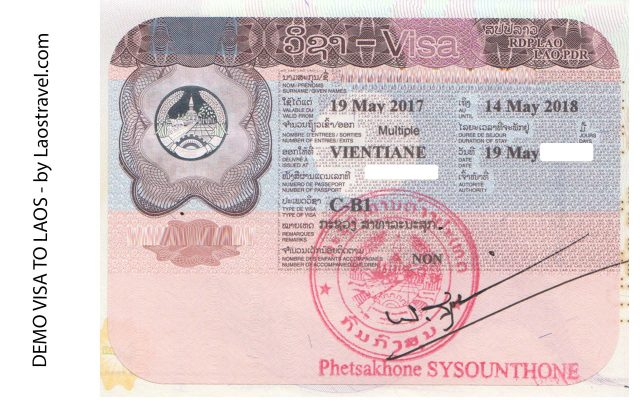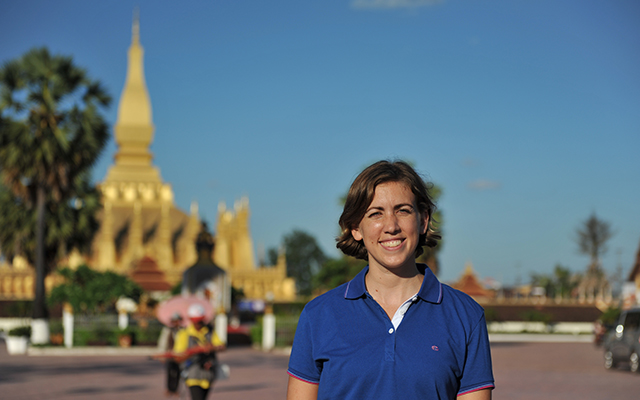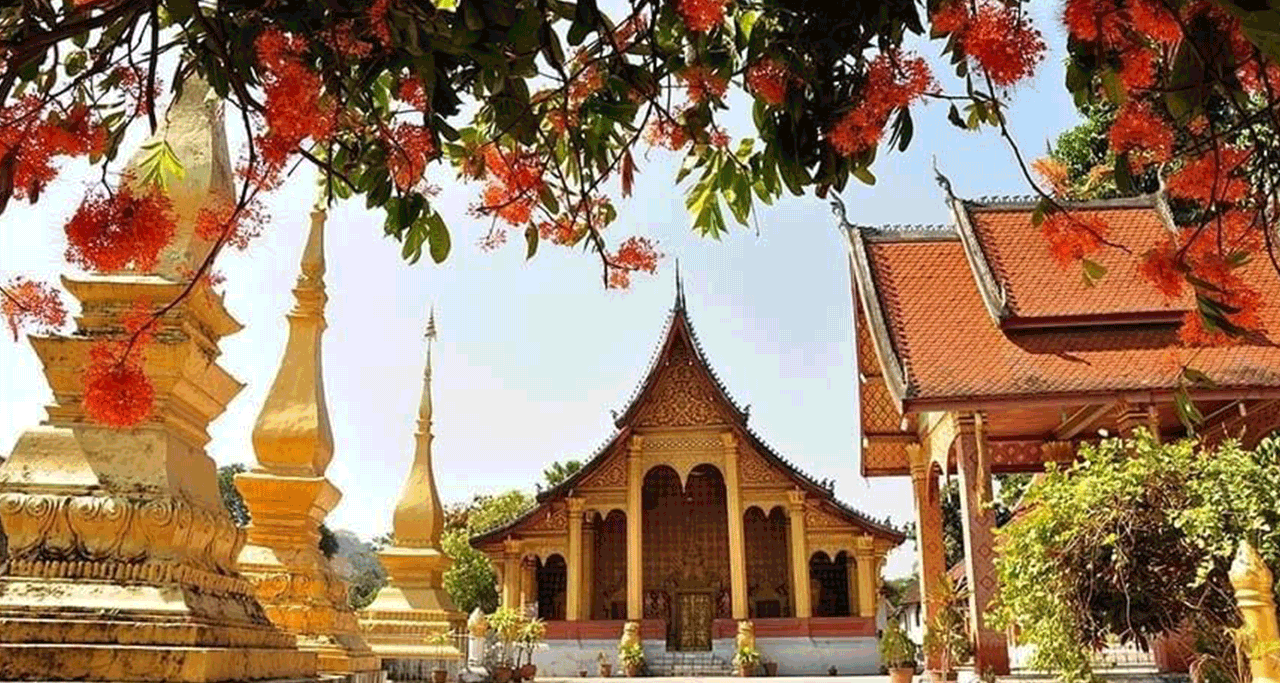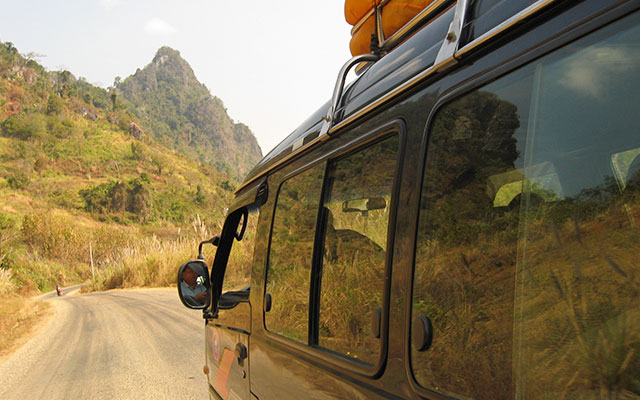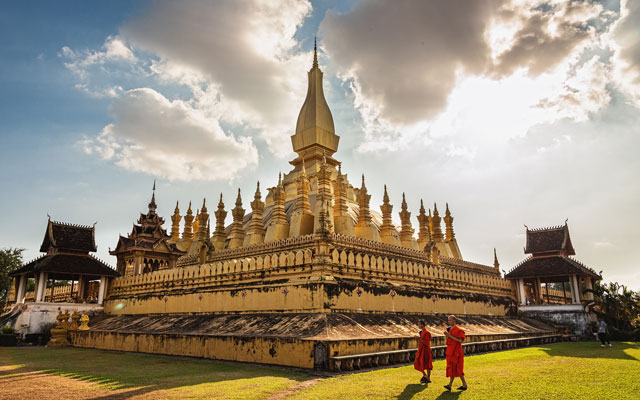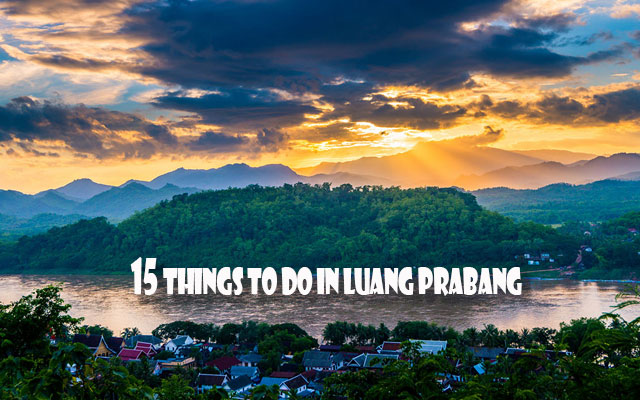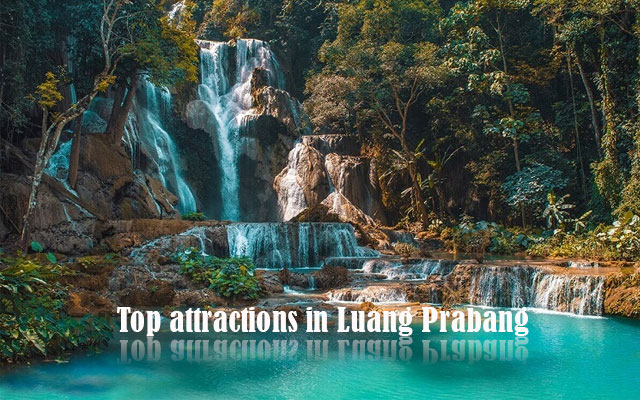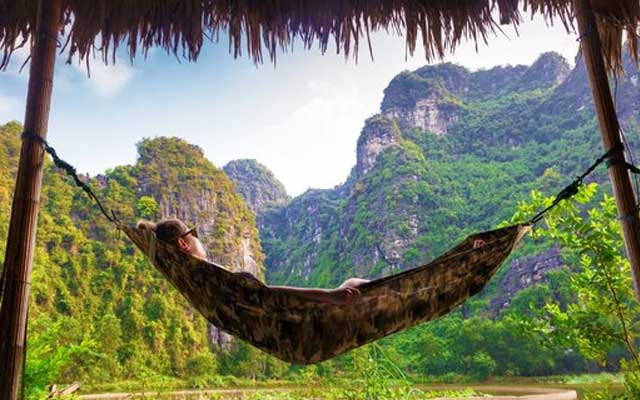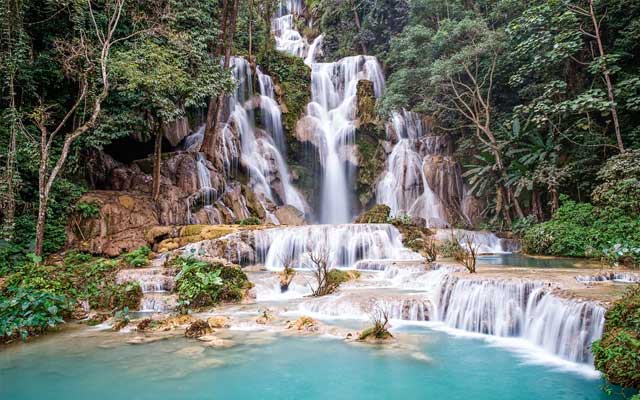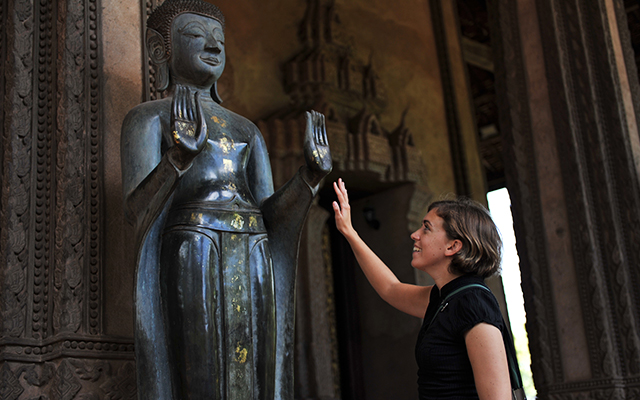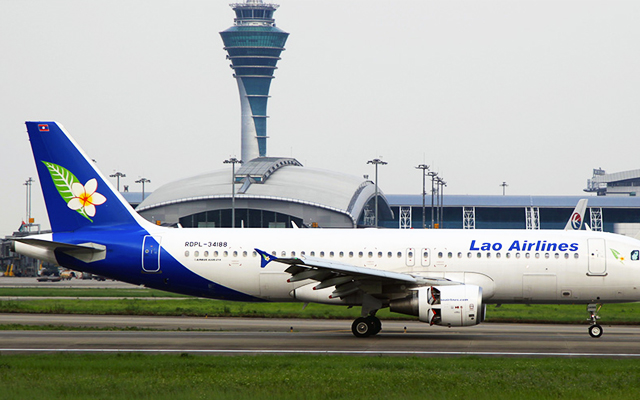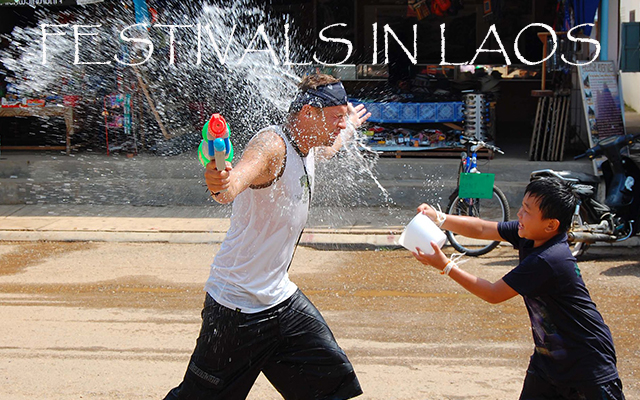27 Top-Rated Tourist Attractions in Laos
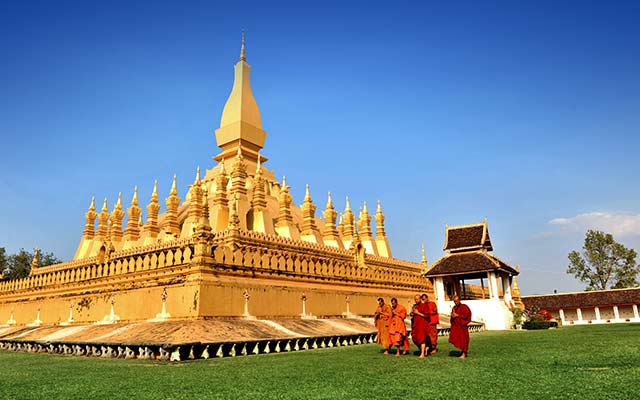
Laos is a hidden gem among South East Asian countries. Referring to Laos, people think of a peaceful country with gentle and warm people, a pilgrimage to Buddha land or a visit to the majestic natural beauty. It is rich from cultural diversity, customs, cuisine, arts, festivals, etc. For those who are a lover of tranquility, green nature and the mysterious beauty of religion, Laos should be a definite choice, especially in dry season (December to April).
Plan your trip to this enchanting country with our list of the top attractions in Laos through this post!
27 Top-Rated Tourist Attractions in Laos:
Contents
Famous destinations in the capital Vientiane
1. Arc de Triomphe – Patuxay
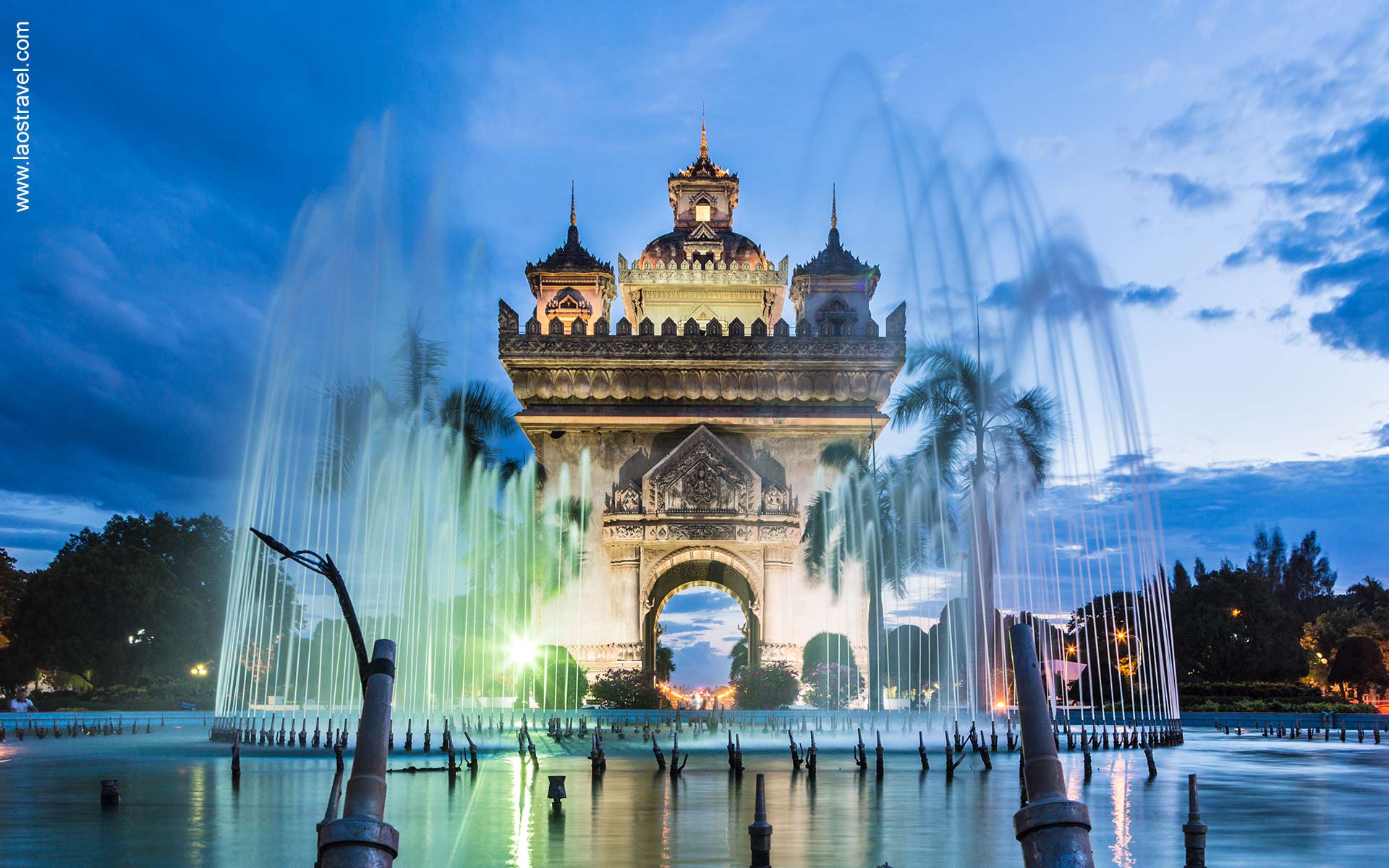
Patuxay – Arc de Triomphe is the beautiful symbol of Vientiane, offering the panoramic view of the capital from its top.
As a commemorative work of unknown soldiers lying on Lane Xang Avenue, the Arc de Triomphe is also considered one of the most beautiful symbols of the capital Vientiane. It has a body that simulates the shape of the Arc de Triumphe station in Paris while the top part is a pyramid-shaped architecture and reliefs typical of Laotian culture. In the cool wind afternoon, from the top of the Arc de Triomphe, you can enjoy the panoramic view of Vientiane in a moment of light and dark interference with a magnificent sunset.
2. Pha That Luang Stupa
Pha That Luang is considered a world cultural heritage, a sacred symbol of the Theravada Buddhist nation of Laos. The image of the largest and most beautiful relic tower in Laos is also printed on paper money and the country’s emblem. Built on the ruins of the ancient Indian temple, Pha That Luang outside is glazed with brilliant gold, especially brighter and more splendid when the sun rises. Every year, in mid-November, people across the country flock here to attend a national-level festival.
3. Haw Phra Kaew
Famous and important only after Pha That Luang, the sacred and noble Wat Phra Keo Pagoda is also as a museum holding works of art representing the religious beauty of Laotians. Here, many precious sculptures and pictures are inlaid with gold, covered with silver, studded with jade and many other precious stones. Walking in the middle of Wat Phra Keo, you will feel like you are lost in a peaceful fairyland, where there are many jewels and so many souvenirs.
4. Wat Sisaket
This temple is still preserved since the date of its construction in 1818 according to Siamese Buddhist architecture. Throughout the corridor include 2,000 Buddha statues which are cast in bronze, ceramic, precious wood and gilded, plated with iridescent silver. The number of Buddha statues in the temple can be up to nearly 7,000 in total which sometimes takes you a whole day to visit. What a very staggering number for an old temple.
5. Wat Ong Teu
This temple is famous for the largest bronze Buddha statue in Vientiane. There is also a Sangha Buddhist school, where monks from all over the country gather to study and listen to teachings.
6. Buddha Park
Buddha Park is a very large garden with more than 200 Buddhist statues and Hindu deities that are crafted as unique works of art. The most prominent of the garden is a giant reclining Buddha statue measuring 40 meters long. The moss-covered statue is on a cool green background, creating an ancient but very peaceful space. In addition, the garden also recreates images of gods, demons, people, animals and the 3 layers of hell, earth and heaven.
Luang Prabang – The ancient capital recognized by UNESCO as a world cultural heritage
1. Wat Xieng Thong

Wat Xieng Thong is one of the most important of Lao monasteries and remains a significant monument to the spirit of religion, royalty and traditional art.
Built in 1560 by King Setthathirath and under the royal patronage of the Kingdom of Laos, Wat Xieng Thong is considered the most beautiful, most important and oldest of the 65 great temples in Luang Prabang. The pagoda clearly shows the architectural lines of Laos with the sharp curved roof pointing straight up to the sky, inside there are many very delicate reliefs, carvings, recounting many sacred Buddha relics.
2. Wat Wisunarat
Built in 1513, Wat Wisunarat is the oldest temple in Luang Prabang, recognized as a world cultural heritage. Not too fussy about architecture, Wat Wisunarat still retains its majesty, sacredness and immense purity.
3. Mount Phou Si
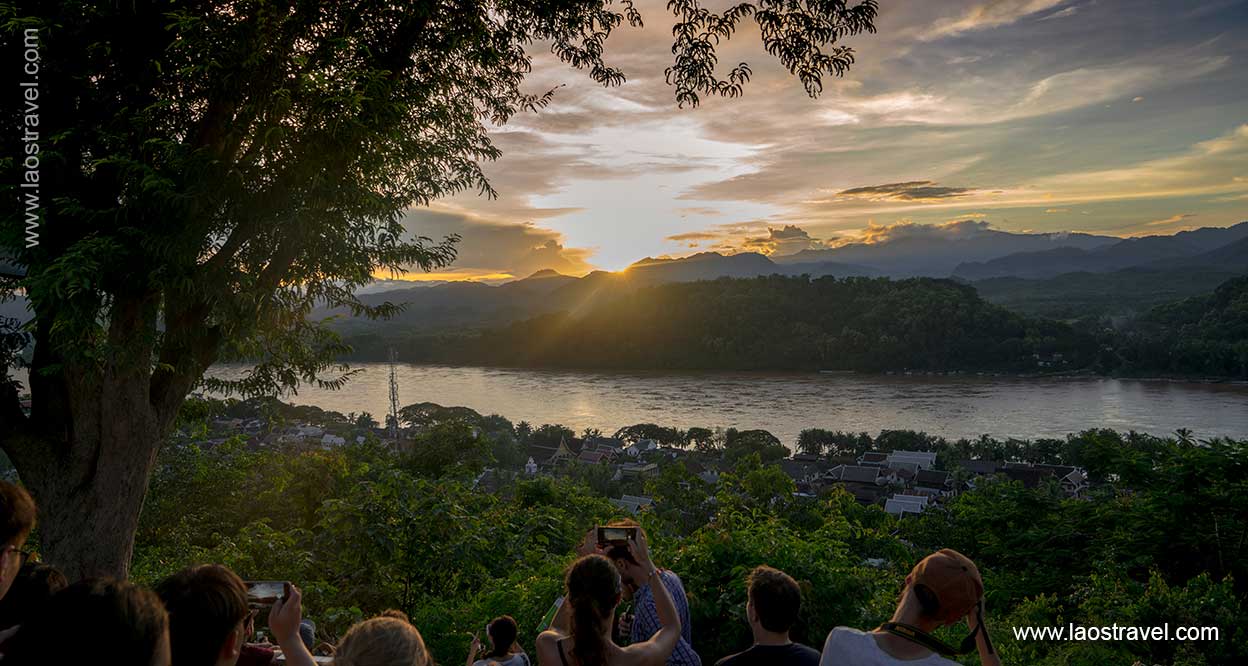
At 100m above sea level, Mount Phousi is Luang Prabang’s highest hill, offering panorama view of the ancient capital and a perfect place to watch sunrise or sunset over Mekong River.
This is the highest point in Luang Prabang that offers a panoramic view of the peaceful Luang Prabang in the land of Buddha and the gentle Mekong. To conquer this mountain, you have to pass up to 329 steps made of red brick and can stop to enjoy the beautiful scenery on both sides while climbing.
4. Royal Palace Museum
Royal Palace Museum used to be the Royal Palace of the Kingdom of Laos in the past. Blending the luxurious French architecture and the Lao sculptures, this place keeps many precious treasures of the country and beautiful surrounding such as jaggery soaring up to the sky, the elegant garden with trees rare cultivars and clear lake.
5. Pak Ou Caves
Pak Ou Caves overlook the Mekong River. There are two caves: Tham Ting and Tham Theung housing hundreds of miniature Buddha sculptures. There are variety of Buddha position such as statue of Buddha meditating, teaching, or in nirvana. Thereby, you will admire the artworks which have been tinged with time but clearly show the talent and ingenuity of the Lao artisans.
6. Kuangsi Waterfall
Kuang Si waterfall is one of the most stunning waterfalls in the country with a 50-meter drop of flowing down from three tiers. There are a series of pools beneath the falls where you can go for a swim and get the best view by looking up at the grand falls.
7. Elephant Village Sanctuary
The Elephant Village Sanctuary is an educational facility dedicated to the rehabilitation and protection of Asian elephants in Laos. This is one of the most comprehensive, hands-on experiences in the country and a rare chance to get up close to these magnificent animals. There are 3 tour packages for your choice: half day elephant experience, full day experience or two-day mahout. During the tour, you will take part in interesting activities such as bathing the elephant, feeding them, exploring their hospital or museum, jungle trekking, visiting the stunning Tad Sae Waterfall…
8. The Living Land Company

Join local life on organic farm and have fun time at the Living Land Company, that is one of interesting activities in Luang Prabang.
This is a community enterprise focusing on organic farm, run by local team and for the benefit of Lao people. Organic vegetables, salad greens, herbs and rice are grown and supplied to the leading hotels and restaurants in Luang Prabang. Coming here, you will have a fun and educational experience on the farm, work on the land like the natives and understand a life of the farmer.
The beautiful landscapes should not to be missed in Xieng Khuang
1. The Plain of Jars
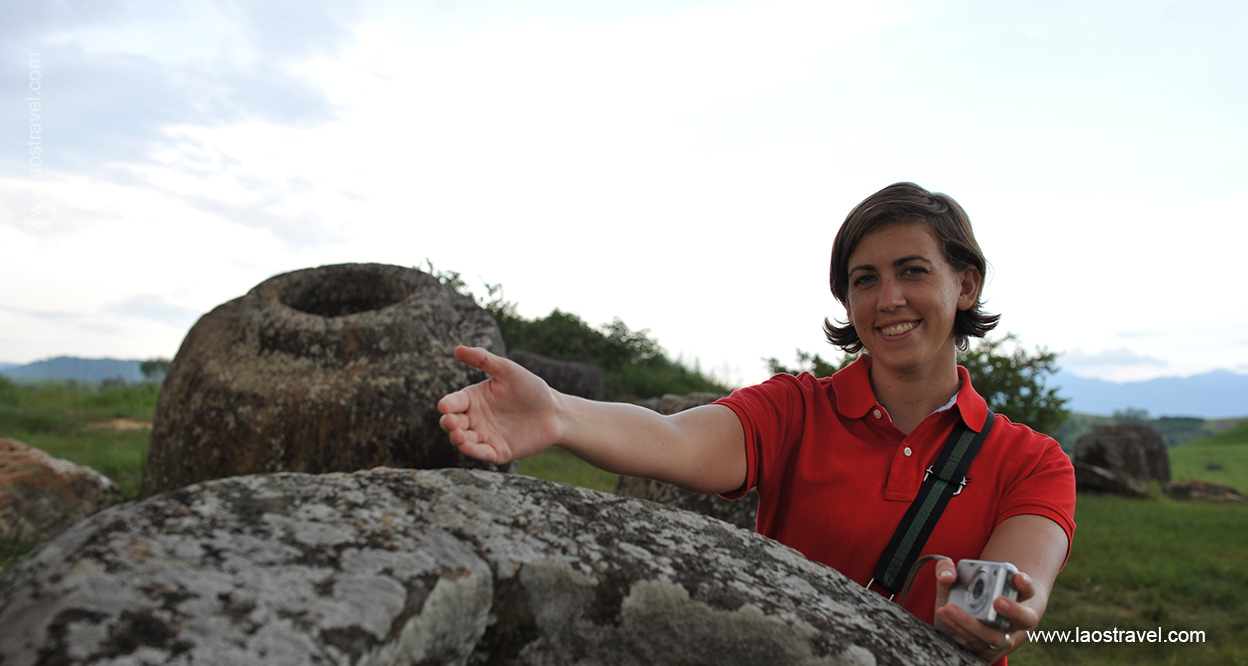
As a megalithic archaeological landscape in Laos, the Plain of Jars consists of thousands of stone jars scattered around the upland valleys and the lower foothills of the central plain of the Xiangkhoang Plateau.
Xieng Khuang is one of the areas with pristine landscapes and the purest climate in Laos. Here, the most mysterious is the Plain of Jars, a cultural and historical area with many curious theories both tourists and archaeologists. Thousands of stone jars were scattered throughout the field which are believed to date from 1,500 to 2,000 years. The Plain of Jars is also a mark of the fierce battlefield of the war against the US of the three Indochina countries.
2. Muang Khoun
Known as Old Xieng Khuang, Muang Khoun was the provincial capital in French colonialism, the Royal Capital and the centre of Phuan Kingdom. There are a few buildings still existing in the town such as French school, governor’s residence and Wat Phia Wat, in which, a sitting Buddha is surrounded by brick columns reaching skywards. The nearby Ban Phai Village also consists of jars built from granite instead of stone as in Plain of Jars. At here, you can easily meet the villagers doing weaving and basketry.
The beautiful lush fields and creeks will be offerred in front of your eyes when standing in a suspension bridge at the village. In addition, That Foun where displays ashes of Buddha brought from Indian and That Chom Phet which was constructed to suggest Buddha values are impressive stupas attracting tourists in this area.
3. Mulberries Organic Silk Farm
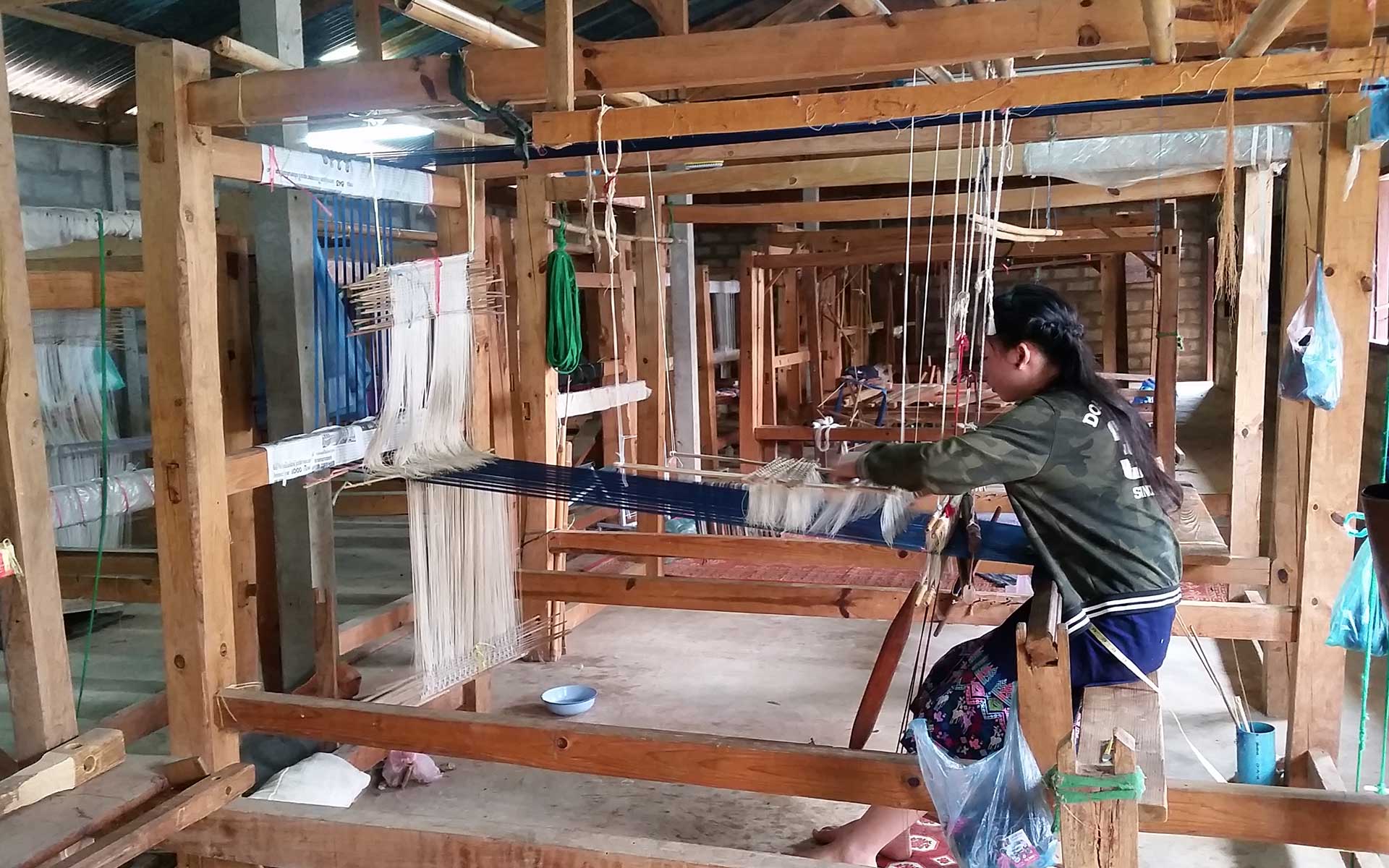
View first hand the lengthy process of making a silk garment from start to finish at Mulberries Organic Silk Farm.
Created in 1993, the farm aims to maintain and encourage the Lao traditional silk fibre production for centuries, enhance income for families in the surrounding areas as well as protect environment and natural resources by growing their own chemical-free mulberry trees. If you are fascinated in making silk products, you can observe every step of the production, from growing mulberries, feeding the worms, reeling silk, to naturally-dyeing and weaving the cloths, and even try to participate in one stage right here. The most outstanding product in mulberries gift shops is scarves with a wealth of colors and patterns.
4. Muong Kham & Tham Piu Cave
Muong Kham has a cool and fresh year-round climate. The town is also famous for 2 natural hot springs, Bo Noi (small stream) and Bo Nhay (big stream) with temperatures up to 60 degrees Celsius.
Around 4km north of Muang Kham locates Tham Piu Cave, one of the tragedies of the Indochina War and stands as a solemn memorial to hundreds of innocent villages who were taking refuge in the cave and were killed by a single US missile attack in 1968. When up to the cave with grave markets, bomb craters and a large golden Buddha along the way, you can offer incense and pay tribute to the dead at the shrine.
5. Tham Pha Cave & Nong Tang Lake
Located about 48km west of Phosavan is Nong Tang town where you can visit the 15th century ruins such as Wat Mixay, Wat Ban Ang, Ban Mong Stupa. A peaceful natural Nong Tang lake – nameshake of the town – is nearby, flanked by high limestone cliffs. This is a favorite place for the locals to catch fish or have a picnic. The highlight of this area is Tham Pha Cave complex that houses hundreds of Buddha statues from the Haw invasion a few centuries ago, and the awesome caves are located deep into the hill side.
Eco adventure paradise in Vang Vieng
1. Caves
Tham Chang Cave
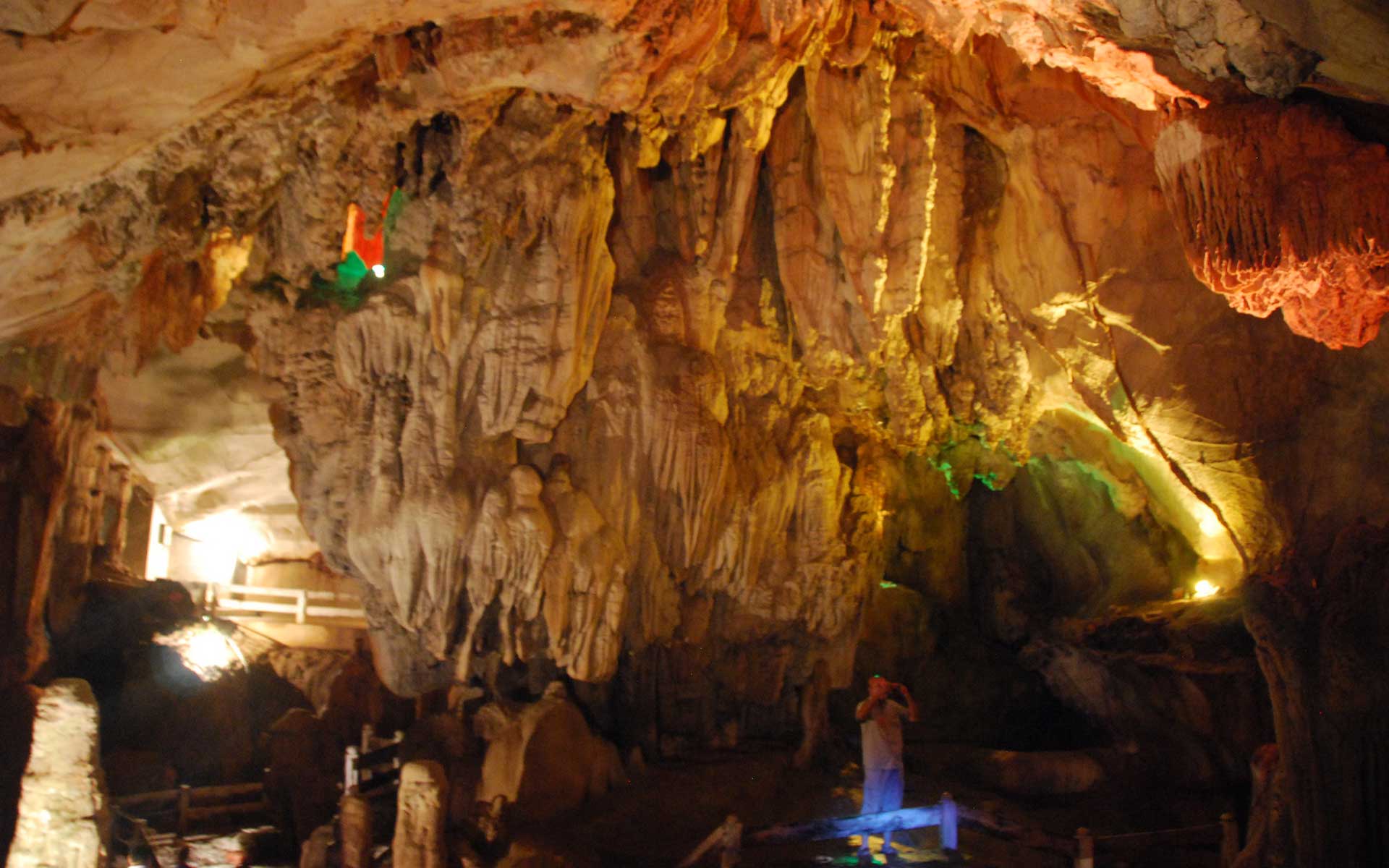
Tham Chang Cave – the most famous one around Vang Vieng which includes both nature and history value.
Vang Vieng is home to dozens of caves, in which, Tham Chang Cave (or other called as Tham Jang) is considered as the most famous one around Vang Vieng. This cave includes nature value with beautiful stalactites, rare stalagmites and history value as well. This is pretty cool inside. To reach the cave, you need to walk across the long bridge built across the Nam Song River, then climbing steep stairways up to the cave. A blue lagoon is a bonus thing here for you to swim in. You should better head there in the morning to beat the crowds during peak season.
Tham Phu Kham Cave & Blue Lagoon
Tham Phu Kham Cave is around 20 minutes west from Tham Chang and also a favorite spot in Vang Vieng as this is not only for cave interest (flashlight is necessary to explore the cave with steep climbs) but visitor can enjoy some fun activities at nearby blue lagoon such as swimming, jumping off from the tree into the water. However, the water color will be not blue when the rainy season comes (June-August) and often get crowded. There is also other place with same name – blue lagoon 3 – for your choice with less touristy but further at around 1 hour from town.
Tham Nam (Water Cave) – Tham Xang (Elephant Cave)Tham Nam is an approximately 500m long underground cave including some streams running through the mountainside which takes about 30 minutes to reach the end before turning back. In dry season when the water level is low, you can walk into the cave. In rainy season, you will get inside the cave with a tube and a rope due to high water level and strong flow which can be more difficult when the darkness covers everything. For those who love adventure, it is worth changeling one time.
Not far from Tham Nam is Tham Xang or other called as Elephant Cave because the special feature of the cave is an elephant-form stalactite which created the name of the cave. This is small in size so making combined tour with other should be more worthy than visiting itself only.
2. Kaeng Nyui Waterfall
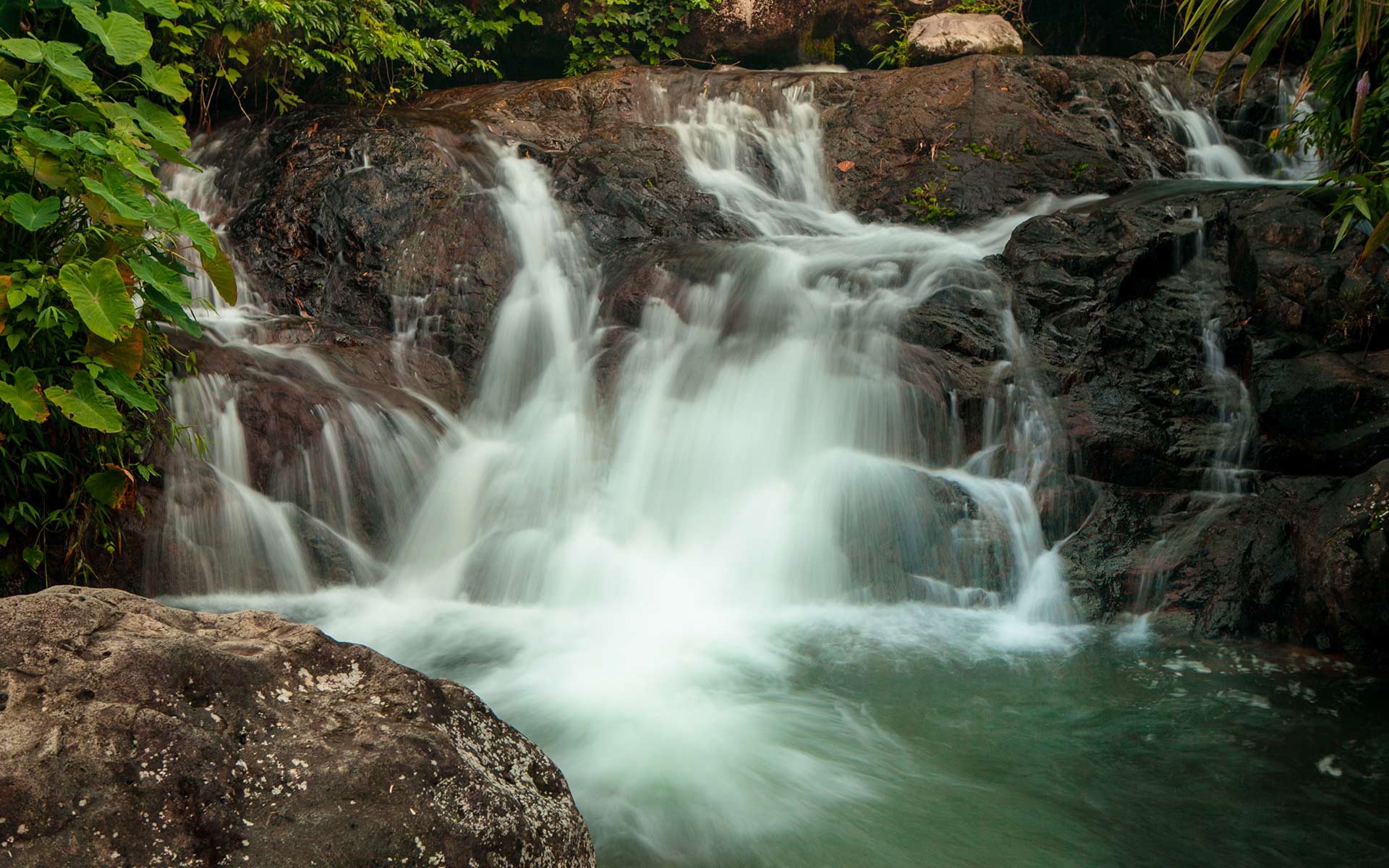
A 30 meter Kaeng Nyui Waterfall, known for full of nature beauty, the coolness streams and lush green.
About 25-minute drive away from the center of town on the east side, you will visit 30-m tall Kaeng Nuyi Waterfall which is located in a park maintained by the villagers of Ban Naduang. This waterfall is at its best in rainy season while the flow dramatically differs in the dry season. There are several smaller waterfalls that you can swim in.
3. Adventure Experience
Hiking up to mountain viewpoints
If you are looking for an amazing viewpoint of Vang Vieng, head to Phangern Mountain – hiking to the top is one of the best things to do. The hike up isn’t well-paved so you will need to wear proper shoes & bring enough water with you. It can take you around 20 minutes or more each way depending on your health and breaks along the way.
Another stunning place to check out Vang Vieng from above is at Nam Xay viewpoint. This is slightly easier and shorter to get to the top with 360-degree views while reaching on it. However, you still need to be careful when towards the end the path can be muddy and slippery.
Tube & Kayak on Nam Song River
Vang Vieng is on the banks of the Nam Song, and no trip would be completed without experiencing the river first hand. Kayaking can be offered as part of a day tour that includes lagoons and caves. Tubing can also be arranged around town.
Balloon Over VangVieng
Taking a hot air balloon flight over Vang Vieng can be a relaxing way before you start a day of activities or after finishing them. The flight will offer beautiful rural scenery, clear river, green mountain and its famous limestone formations.
- Sunrise flight starts at 5:30am-6:10am
- Sunset flight starts at 5:30pm-6:10pm
Please check the availability, condition and policy in advance.
Quintessence converges in Champasak
1. Pakse
Pakse is the capital city of Champasak, situated along the Mekong and Sedone Rivers. It serves as the gateway to southern Laos with the French influence on the architecture and culture. There still has plenty to offer tourists within its borders, such as Wat Luang – a large temple that houses the Buddhist Monk School, or Wat Phabad – a large and old temple with impressive architecture.
In addition, you can also find a good selection of hotels and restaurants overlooking the river.
2. Wat Phu
A more than 40km south away from Pakse, you will find stunning ruins at Wat Phu which is recognized as a world cultural heritage. Dated back to the 5th century, the ruins are of beautiful sandstone and brick buildings with great view of Mekong River and the surrounding countryside. Every year, large numbers of Laotians come here on pilgrimages to pray for peace, good rain and wind.
3. Bolaven Plateau
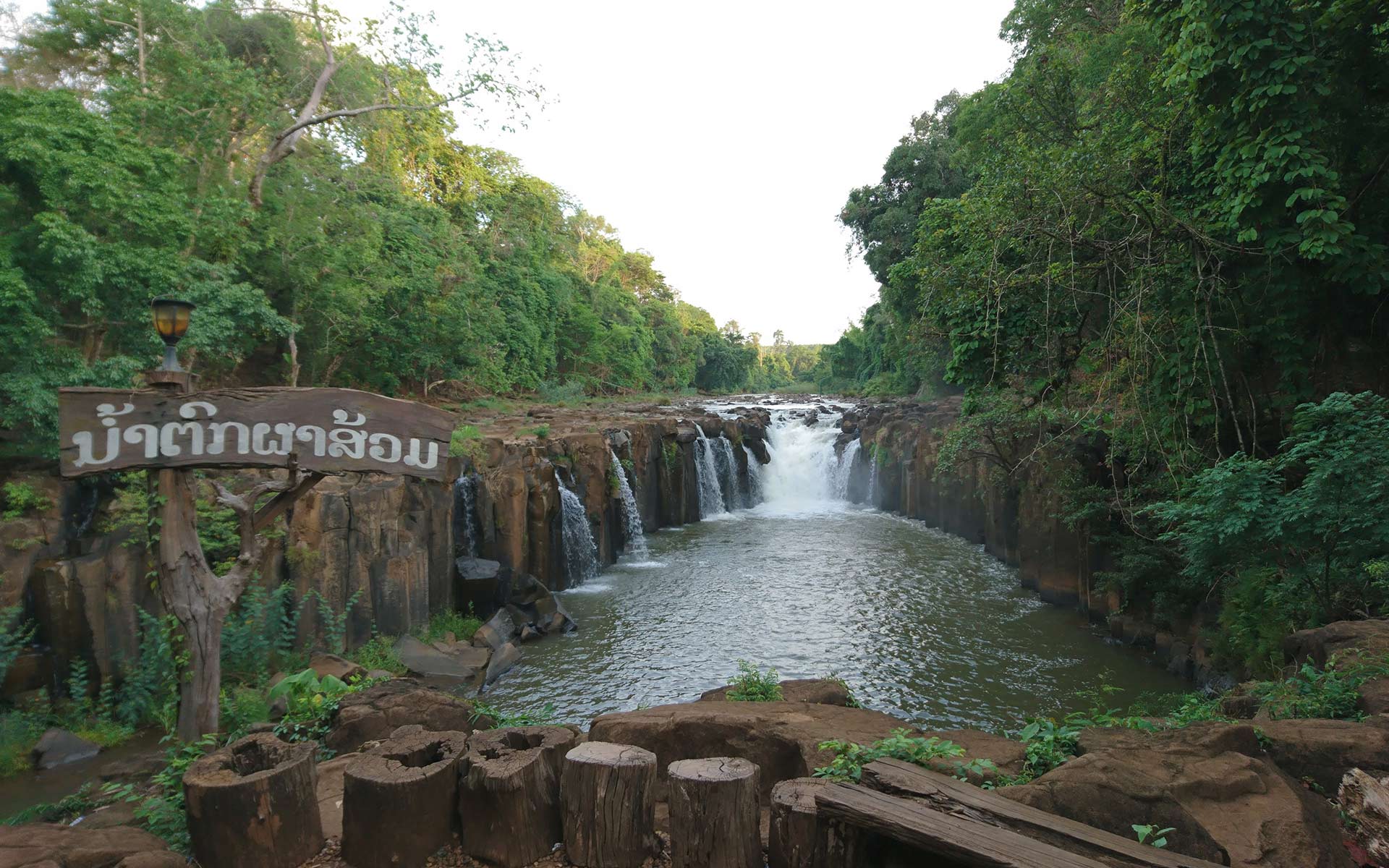
Bolaven Plateau in Southern Laos attracts visitors by its cool climate, magnificent waterfalls and the best coffee in all of Laos.
The Bolaven Plateau is an elevated region in southern Laos and home to many ethnic group such as the Laven, the Alak, Katu, Taoy, and Suay. The most popular places of the region to visit are the waterfalls including Tad Lo, Tad Fane; the villages of ethnic minorities, a tour of the area’s coffee plantations or an elephant day trek.
4. Si Phan Don

Si Phan Don is dotted with numerous islands in Mekong River, of which Don Khong is the largest island.
Si Phan Don belongs to Khong District, including the islands and part of the mainland in the east, dotted with numerous islands, of which, Don Khong is the largest islands, following with Don Som, Don Det and Don Khon. The key features of the Si Phan Don archipelago include:
- Khone Phapheng Waterfall which is known as the Niagara of Asia and is the largest waterfall in Southeast Asia with a length of 12 km, offering the beautiful scenery;
- Freshwater Irrawaddy dolphins which are endangered species that can be viewed by boat off Don Khon island;
- The remains of the first railway in Laos – the Don Det–Don Khon 7km long narrow gauge railway which was built by the French to bypass the Khone Phapheng Falls and travel along the Mekong River.
5. National Protected Areas
Xe Pian National Protected Area is home to forests and wetlands with many species of birds, fish as well as endangered mammals including tigers, elephants, bears and gibbons. About 30 miles (50 km) south of Pakse, it makes a great day trip or overnight.
Dong Hua Sao National Protected Area is home to butterflies, birds and monkeys and covers 425 square miles (1,100 sq km). You can spend more than one day (2-3 days) in the jungle hiking, zip lining and enjoying nature.


